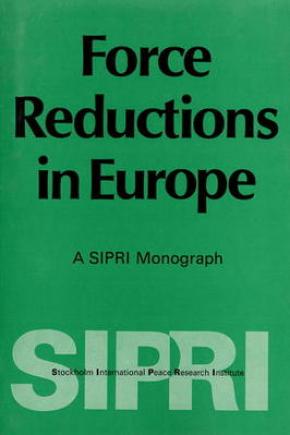Force Reductions in Europe
Since the end of World War II, various arms-control and disarmament proposals concerning Europe have been put forward. The present negotiations on the mutual reduction of forces and armaments and associated measures in Central Europe are the result of the most recent of these proposals, submitted by the member countries of the Warsaw Treaty Organization (WTO) and the North Atlantic Treaty Organization (NATO).
This study attempts to answer such questions as:
- What methods of reduction should be applied?
- What kind of forces should be reduced?
- Which territory should be covered?
- Which 'associated measures' might be adopted?
In this study, the military doctrines of NATO and the WTO are reviewed and a number of issues arising from the proposals for the reduction of forces in Europe are analysed. The present military balance in Europe and the military expenditures of both alliances are also examined.
The main conclusion of the study is that, taking all components into consideration (conventional, tactical nuclear and strategic nuclear forces), some kind of military balance already exists in Europe, and that the present negotiations, rather than jeopardizing that balance, should aim at preserving it, although at lower levels of armaments and at lower costs. Preserving this balance is probably essential for the successful outcome of any NATO-WTO negotiations on the mutual reduction of forces and armaments in Europe.
1. Recent proposals on force reductions
2. Military strategy
3. Reduction of forces in Europe
Appendix A. The military balance between NATO and the WTO
Appendix B. Military expenditures in NATO and the WTO

